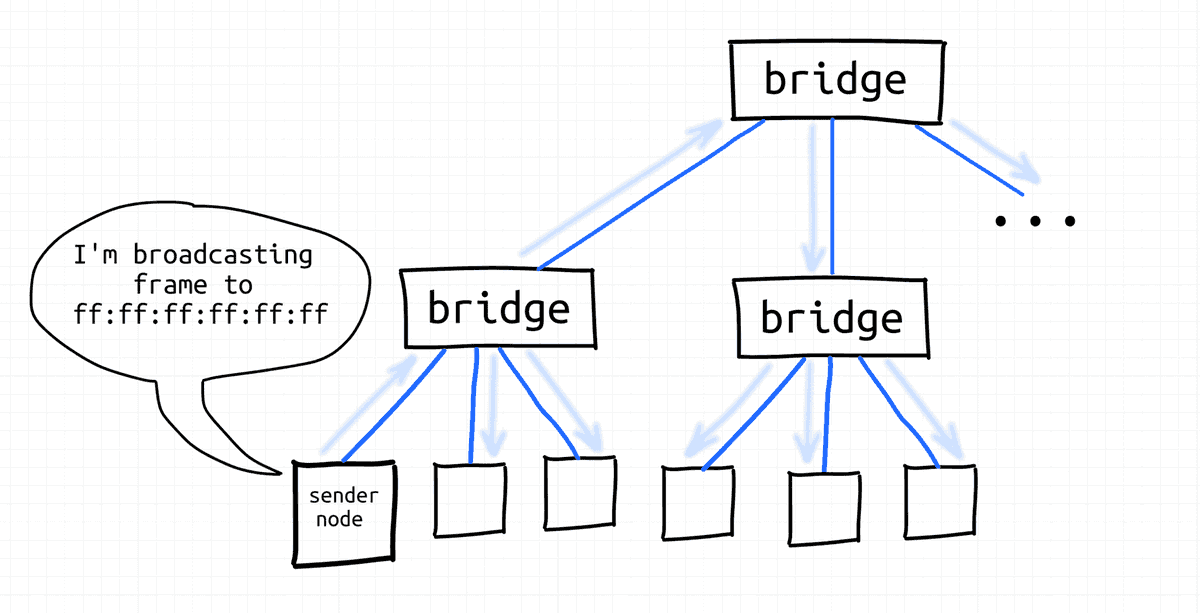
Grasping Computer Networking - Bottom-Up Approach.
1/ Computers can talk only to their neighbors!
What is a neighbor? It's a network node residing on the same Layer 2 segment.
Curious, what is an L2 segment? Then read on!
1/ Computers can talk only to their neighbors!
What is a neighbor? It's a network node residing on the same Layer 2 segment.
Curious, what is an L2 segment? Then read on!

A simplest possible example of an L2 segment is a point-to-point connection of two computers (as above).
But to interconnect multiple computers, an additional multi-port device is needed.
But to interconnect multiple computers, an additional multi-port device is needed.
For wired networks, such a device is called "switch" or "bridge".
There are lots of switches in data centers. But you probably have one at home too.
It's your Wi-Fi router! See those RJ45 ports on the backside? Then it's not a router but a bridge combined with a router.
There are lots of switches in data centers. But you probably have one at home too.
It's your Wi-Fi router! See those RJ45 ports on the backside? Then it's not a router but a bridge combined with a router.

Switches have a limited number of ports. So, often multiple switches are interconnected to make a bigger L2 segment.
However, logically it's a flat structure:
However, logically it's a flat structure:

3/ Two types of communication are possible in an L2 segment.
- Ad-hoc (using destination's MAC address) - a frame is delivered only to a single destination node.
- Ad-hoc (using destination's MAC address) - a frame is delivered only to a single destination node.

- Broadcast (using a special ff:ff:ff:ff:ff:ff destination MAC) - a frame is delivered to every node of the segment. 

4/ Unique MAC addresses assigned by hardware vendors and L2 broadcasting are super-handy.
...because they simplify life for higher-layer protocols.
...because they simplify life for higher-layer protocols.
5/ IP (Layer 3) protocol heavily relies on L2 capabilities.
How to talk to a neighbor knowing only its IP address?
Send a broadcast "Who has 192.168.0.5?" frame first.
A good neighbor would reply. And the source MAC of the reply will be your destination. Then encapsulate IP!
How to talk to a neighbor knowing only its IP address?
Send a broadcast "Who has 192.168.0.5?" frame first.
A good neighbor would reply. And the source MAC of the reply will be your destination. Then encapsulate IP!

6/ To send IP packets between L2 segments you need a router.
A router is a multi-home node that resides on (at least) two network segments at the same time.
A router is a multi-home node that resides on (at least) two network segments at the same time.
To send an IP packet to an arbitrary computer on the Internet, you first need to send it (wrapped into an Ethernet frame) to your local router.
The local router always resides on the same L2 segment as you do. So, it's no different from talking to any other neighbor.
The local router always resides on the same L2 segment as you do. So, it's no different from talking to any other neighbor.
The router then extracts the IP packet from the frame and resends it to the right network segment (following the described L2 communication procedure).
The actual path of a packet will consist of a series of such routers, called hops.
The actual path of a packet will consist of a series of such routers, called hops.
• • •
Missing some Tweet in this thread? You can try to
force a refresh



